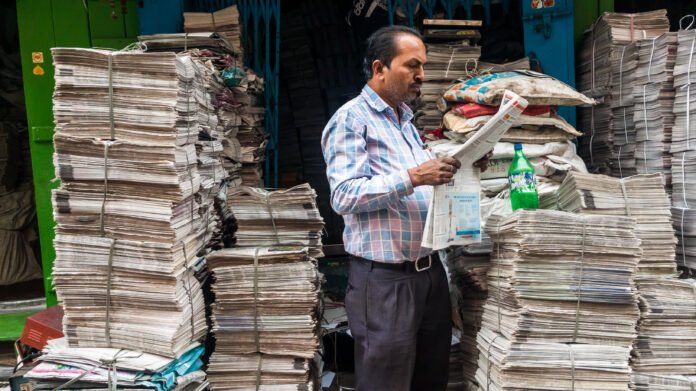In our previous editorial, we wrote about the rollercoaster ride of sorts for print media over the past few years and how our research showed the industry’s resilience, negating all doomsday predictions that would have led to its demise amid such severe headwinds. At the same time, IppStar’s (www.ippstar.org) figures over fifteen years indicate that newspapers had been stagnating or slowing down, if not entirely declining, much before the Covid-19 pandemic.
Around four to five years before the pandemic struck, at my previous organization, a leading newspaper, there was a rush to embrace digital. That was much before the surge of digital in the wake of the pandemic. Editors with global exposure were hired to see the transformation. “Newspapers will shut down in five years, so it has to be digital first,” we were told.
Ten years later, print is still very much alive and kicking, and not on life support, as many would like to believe – though it took a severe beating during the pandemic when circulation dropped to near zero and revenues plummeted.
Since then, it has been a miraculous turnaround, as suggested by the recent financial results, IPPStar’s analysis (which we published in our September edition), and the recent Audit Bureau of Circulation (ABC) numbers, which suggest a nearly 3% rise in the number of copies in January-June 2025 compared to the July-December 2024 period. 29,744,148 copies were printed in H1 2025, as compared to 28,941,876 in H2 2024. The rise in circulation has been attributed to the easing of newsprint prices and a fresh impetus from newspaper houses to regain lost readers and attract new ones. Fresh hiring also indicates a renewed interest in print media.
At the recent Indian Printers Summit in Delhi, where CEOs and top executives of leading media houses gathered to brainstorm, a general optimism prevailed, albeit with caution. The initial findings of the world press trends also indicate a general optimism in news, although the survey encompasses both digital and print media. The results also indicate that print, though declining, is still the highest revenue-earning channel.
The leaders, however, cautioned that there was no room for complacency because the rise in circulation or better financial results did not mean it was celebration time. We should not forget that the revival has been from a very low base – print media is just back to the 2019 levels, which was definitely not its best.
Cost-cutting is a temporary measure. And thus, innovations, rediscovering the readers, reinventing newspapers, and tapping the young generation are must-dos for the print media industry if it wants to stay relevant for a longer time, was the general refrain.
This time, the focus on hyperlocal was quite evident. In fact, about 10 years ago, my former editor, in his farewell speech, doubly stressed the need to go hyperlocal. This was a time when print was at its peak. Digital was just a sapling. But he foresaw the future. Many of us looked at him, puzzled. Now we can understand what he was speaking about.
Print and hyperlocal
Now, there is a rush to go hyperlocal. In fact, many newspapers are tying up with resident associations to highlight micro-issues, and targeting educational institutions to catch the young readers and make newspaper reading a habit. Because these are the future readers, a generation naturally inclined toward digital consumption.
The world press trends indicate the rise of an ‘others’ category as a major revenue earner for media houses, which includes tie-ups and events. And this is where newspapers are focusing now – alternative sources of revenue, using the name and legacy of the parent brand. Prothom Alo of Bangladesh is an example of the successful hybridization of print, digital, and local event-based brand activation.
In India, too, newspapers are slowly diversifying, as we have written. While some are using and trying to improvise and recalibrate their printing capabilities toward other avenues, such as book printing (which is still a potent print-heavy segment), contract printing, and packaging printing, others, such as Amar Ujala and Malayala Manorama, have already made a move toward full-blown packaging.
The fact that digital news is struggling to make money and losing traffic in the wake of AI overviews, and the rise of non-journalist news influencers (who may not always be trustworthy), makes a strong case for print to reassert its position as a trusted source of news. It has to change from being a daily news provider to a news explainer – go beyond the news. It is that something extra niche, which will bring the cutting edge needed to stay relevant to the next generation, one that is already losing interest in news.

















